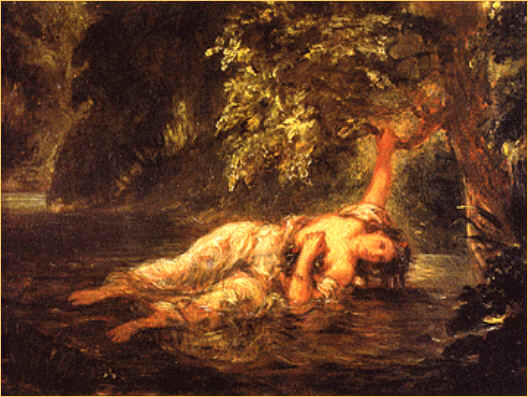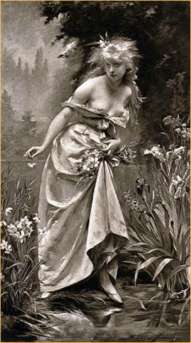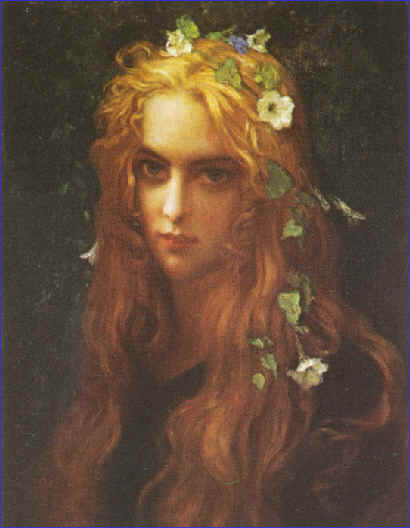|
Romantic Era |
Dr. Johnson’s view of Ophelia as young, beautiful, harmless and pious
was very much an eighteenth-century one, and it emphasized certain
aspects of her character at the expense of others. It set aside the
earthier elements of her character which come to the surface in her
evident understanding of Hamlet’s sexual innuendoes during the Play
Scene, and again in the bawdiness of her distracted singing in Act 4
Scene 5. Representations of Ophelia which set her in a more erotic light
would soon come forward. In France especially, artists of the Romantic
era began to portray Ophelia in more passionate terms, emphasizing the
intensity they saw in her emotions. 
The
first artist to openly represent the sexual element in Ophelia’s
nature was
the great French Romantic painter,
|
|
Eugene Delacroix |
 Another
French artist,
Another
French artist, |
 Still
strongly provocative and troubling is the Ophelia painted by another
French artist,
Still
strongly provocative and troubling is the Ophelia painted by another
French artist, |